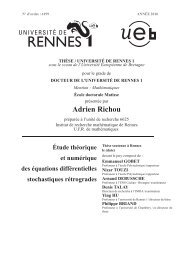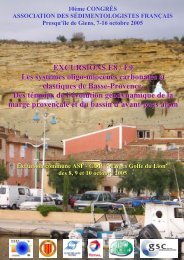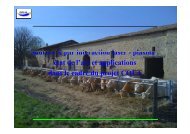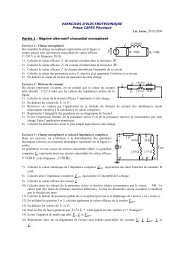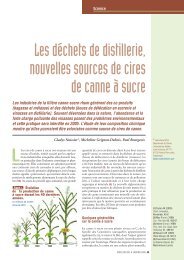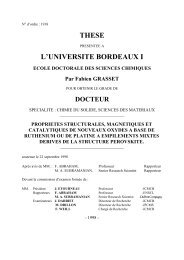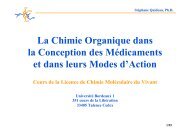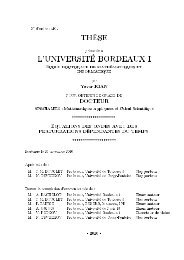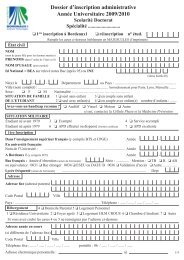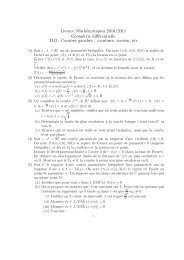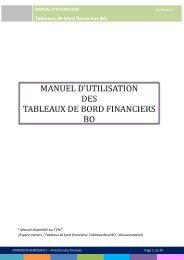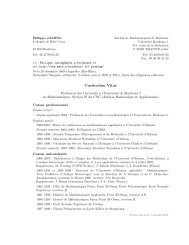Number Theory
Number Theory
Number Theory
Create successful ePaper yourself
Turn your PDF publications into a flip-book with our unique Google optimized e-Paper software.
vKoblitz formula for Morita’s p-adic gamma function. In particular we will seethat this formula leads to remarkably simple proofs of Stickelberger’s congruenceand the Hasse–Davenport product relation. More general L-functionssuch as Hecke L-functions for Grössencharacters, Artin L-functions for Galoisrepresentations, or L-functions attached to modular forms, elliptic curves, orhigher-dimensional objects are mentioned in several places, but a systematicexposition of their properties would be beyond the scope of this book.Much more sophisticated techniques have been brought to bear on thesubject of Diophantine equations, and it is impossible to be exhaustive. Becausethe author is not an expert in most of these techniques they are notstudied in the first three parts of the book. However considering their importance,I have asked a number of much more knowledgeable people to writea few chapters on these techniques, and I have written two myself, and thisforms the fourth and last part of the book (Chapters 12 to 16). These chaptershave a different flavor from the rest of the book: they are in general notself-contained, are of a higher mathematical sophistication than the rest, andusually have no exercises. Chapter 12, written by Yann Bugeaud, GuillaumeHanrot, and Maurice Mignotte, deals with the applications of Baker’s explicitresults on linear forms in logarithms of algebraic numbers, which permit thesolution of a large class of Diophantine equations such as Thue equationsand norm form equations, and includes some recent spectacular successes.Paradoxically, the similar problems on elliptic curves are considerably lesstechnical, and are studied in detail in Section 8.7. Chapter 13, written bySylvain Duquesne, deals with the search for rational points on curves of genusgreater than or equal to 2, restricting for simplicity to the case of hyperellipticcurves of genus 2 (the case of genus 0, in other words of quadratic forms,is treated in Chapters 5 and 6, and the case of genus 1, essentially of ellipticcurves, is treated in Chapters 7 and 8). Chapter 14, written by the author,deals with the so-called super-Fermat equation x p +y q = z r , on which severalmethods have been used, including ordinary algebraic number theory, classicalinvariant theory, rational points on higher genus curves, and Ribet–Wilestype methods. The only proofs that are included are those coming from algebraicnumber theory. Chapter 15, written by Samir Siksek, deals with the useof Galois representations, and in particular of Ribet’s level-lowering theoremand Wiles’s and Taylor–Wiles’s theorem proving the modularity conjecture.The main application is to equations of “abc” type, in other words, equationsof the form a+b+c = 0 with a, b, and c highly composite, the “easiest” applicationof this method being the proof of FLT. The author of this chapter hastried to hide all the sophisticated mathematics and to present the method asa black box that can be used without completely understanding the underlyingtheory. Finally Chapter 16, also written by the author, gives the completeproof of Catalan’s conjecture by P. Mihăilescu. It is entirely based on notesof Yu. Bilu, R. Schoof, and especially of J. Boéchat and M. Mischler, and theonly reason that it is not self-contained is that it will be necessary to assume




